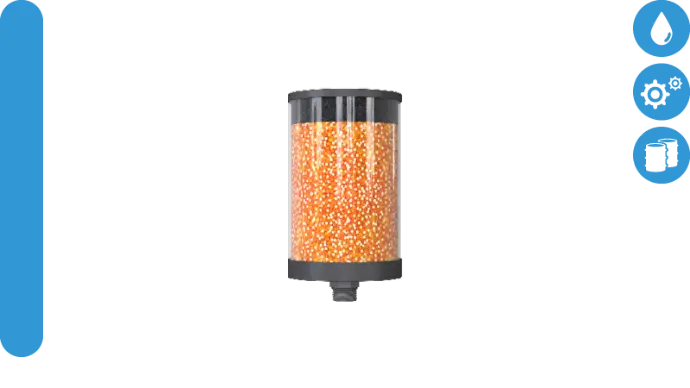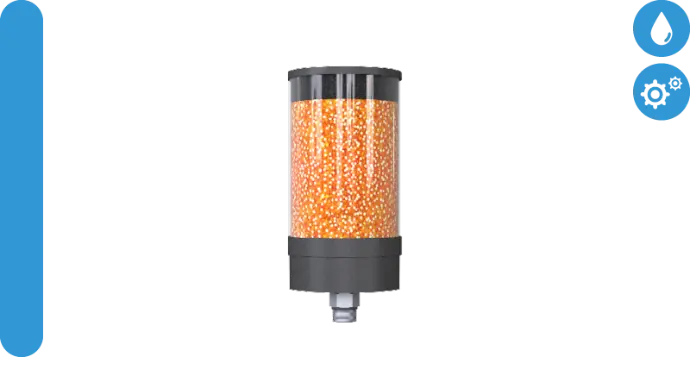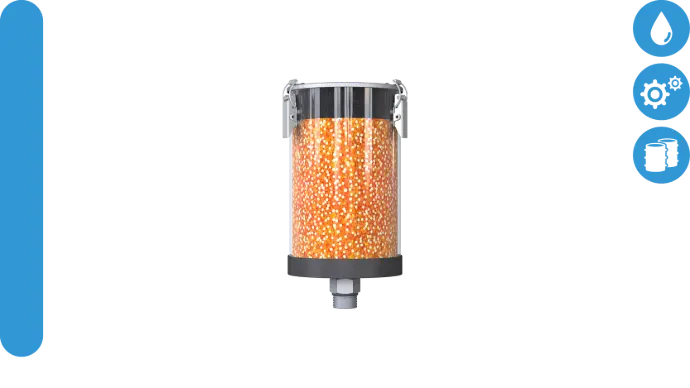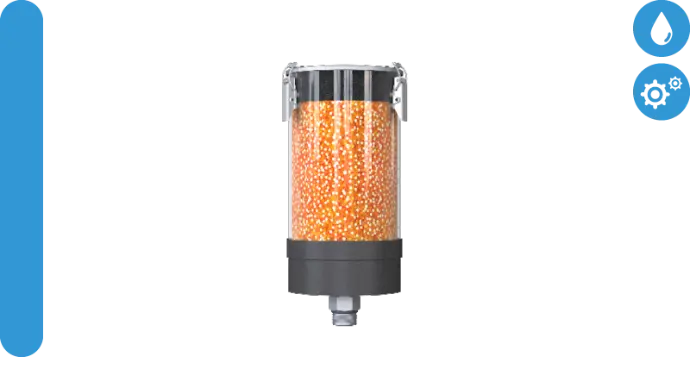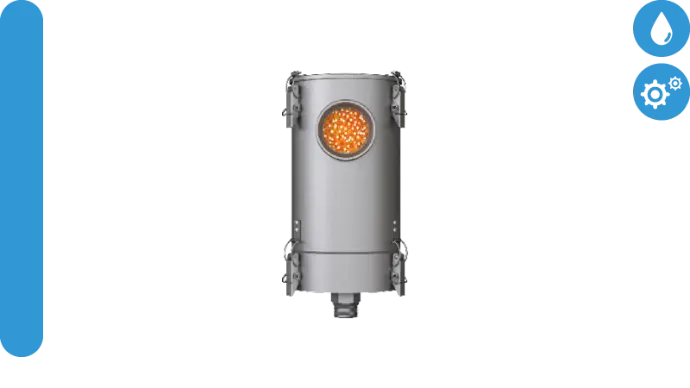Protect gears against corrosion, loss of oil quality, poor lubrication & the escape of pollutants.
Have you noticed condensation droplets inside your transmission tank or even worse: Rust, free water and dirt in hydraulic oil, poor lubrication, signs of abrasion and an oily smell when the unit is running? The cause: moisture and dirt particles entering your system unhindered every time it draws in air to equalize pressure, plus oil aerosols escaping when it breaths out.
Let‘s face it, if you don‘t do anything about it, you‘re heading for expensive maintenance work and damage to employees and environment.
Luckily, there‘s a solution: the installation of an GIEBEL Adsorber®. It dries and cleans the supply air and prevents pollutants from escaping - saving you maintenance work and money.

Why water & dirt should be you biggest concern?
When metals react with oxygen and water, this is known as corrosion. It leads to the formation of hard, highly abrasive particles. In gear oil contaminated with water, these metallic impurities trigger an oxidative chain reaction. Free radicals are formed, which attack the hydrocarbon molecules and break down the oil. But that‘s not all: when oil additives react with water, acids are formed that further accelerate the decomposition. Over time, oil properties such as lubricity, viscosity and shear strength change.
With higher flow characteristics, friction points are no longer supplied with the necessary volume of hydraulic oil. Extremely viscous oils, on the other hand, put a strain on the system‘s drive units and reduce efficiency. Oil ageing residues clog valves, sludge formation increases filter requirements and acidification hightens the risk of corrosion of all metallic components, plus impairs the seals.
Preventing the entry of moisture and dirt as well as the formation of corrosion is therefore the top priority in order to operate gears for a long time, cost-effectively and with low maintenance! And that is exactly what our GIEBEL Adsorbers® do!
Breather dryers
Breather dryers adsorb humidity and thus prevent water from entering machines.
Water separators
Water separators prevent liquid water from entering gearboxes.
Oil mist separators
Oil mist separators prevent oil aerosols and pollutants from escaping machines.
Breather dryers for gears.
D = Disposable
R = Rechargeable
DV = Disposable + Valves
RV = Rechargeable + Valves
Water separators for gears.
D = Disposable
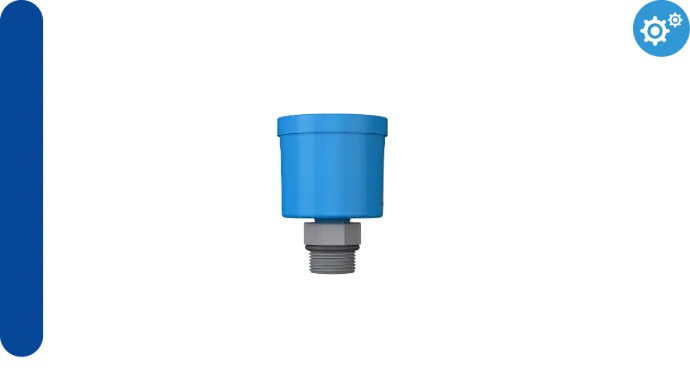
HS-D
Permanent water adsorbers to protect gears from water droplet ingress while allowing them to breathe.
Indoor, outdoor & offshore use
Oil mist separators for gears.
D = Disposable
R = Rechargeable
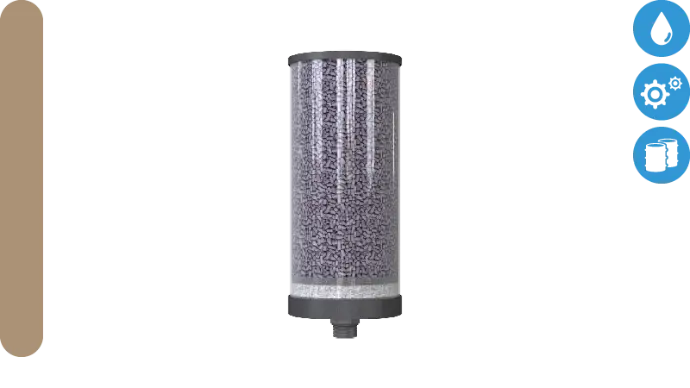
VG-D
Basic oil mist separators for turbo gearboxes, testbenches & recirculating oil lubrication systems.
Disposable
Indoor, outdoor & offshore use
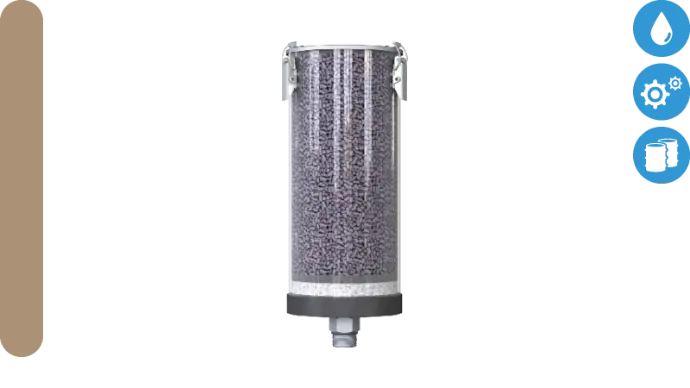
VG-R
Eco oil mist separators for turbo gearboxes, testbenches & recirculating oil lubrication systems.
Rechargeable
Indoor, outdoor & offshore use
FAQ regarding gears.
Malfunctions & troubleshooting
Internal corrosion happens when condensation forms inside the gearbox, especially during temperature fluctuations or when machinery stands still. Rust leads to pitting, premature wear, and even complete component failure.
What you can do: Install a GIEBEL Adsorber® to prevent moist air from entering the gearbox, stopping condensation and internal corrosion.
Oil emulsification occurs when water enters the gearbox and mixes with the lubricant. This destroys the lubricating properties, increases wear on gears and bearings, and can lead to overheating. Moisture typically enters through ventilation points when the gearbox breathes during operation.
What you can do: Use a GIEBEL Adsorber® to filter out moisture from the intake air, preventing emulsification and protecting the oil’s performance.
Overpressure during operation causes seals to stress and eventually fail, leading to oil leaks. Pressure builds up from thermal expansion, especially if ventilation is blocked or ineffective.
What you can do: Equip your gearbox with a GIEBEL Adsorber® to allow balanced pressure equalization while filtering moisture and particles from incoming air.
Fine particles can enter through standard vents when the gearbox breathes, especially in dusty environments. These particles cause abrasion, increased friction, and lead to accelerated wear.
What you can do: A GIEBEL Adsorber® filters not just moisture but also fine particles, keeping your oil clean and protecting your gearbox from abrasive contamination.
Gear oil & filtration
Oil change intervals vary depending on operation time, load, and contamination levels. By preventing moisture and dirt ingress with a GIEBEL Adsorber®, oil stays cleaner for longer, meaning longer intervals between changes.
What you can do: Use a GIEBEL Adsorber® to reduce contamination levels, minimize oil degradation, and extend the oil’s usable life.
Typical signs include a milky appearance (due to emulsified water), darkened color, burnt smell, or visible particles. Monitoring these signs helps prevent severe damage, but prevention is key.
What you can do: Install a GIEBEL Adsorber® to prevent contamination altogether, keeping your oil clear and clean from the start.
Contaminated oil loses lubrication performance, increases friction, accelerates wear on gears and bearings, and can cause system overheating and premature failure.
What you can do: Prevent contamination with a GIEBEL Adsorber® and avoid the risks of costly repairs, downtime, and premature component failure.
Efficiency & optimization
Clean, dry oil reduces internal friction, ensures smooth gear operation, and minimizes energy losses due to drag or overheating. Preventing contamination directly improves overall efficiency.
What you can do: Use a GIEBEL Adsorber® to maintain clean, high-performance oil and keep your gearbox running at optimal efficiency.
By keeping out moisture and contaminants, GIEBEL Adsorbers® maintain oil quality, slow down oxidation processes, and extend oil life significantly.
What you can do: Equip your gearbox with a GIEBEL Adsorber® to reduce oil degradation, cut down on oil changes, and prolong equipment life.
Service & parts
Which ventilation dryer or oil mist separator is best suited to your system depends on various factors. These include, in particular, the size of your hydraulic tank and the operating location (e.g. indoor, outdoor, offshore, in explosion protection zones), the frequency of downtimes, your desired maintenance intervals and whether you prefer a disposable or reusable adsorber.
As a rule of thumb: The larger a gearbox, the larger a ventilation dryer or oil mist separator should be selected. The same applies to maintenance intervals. The further apart maintenance dates are, the larger the adsorber should be. Machines with long downtimes should use ventilation dryers with valves. These protect the desiccant of the adsorber from unnecessary loading. If your systems are operated in harsh environments or explosion protection zones, metal adsorbers are the right choice.
Use the configurator in our online store to find the right aeration dryer or oil mist separator for your system.
GIEBEL Adsorbers® are mounted on the gearbox breather port or via custom adapters. They are quick to install, even in retrofit applications, and work maintenance-free until the desiccant saturates.
What you can do: Install the adsorber on the breather connection point using the appropriate adapter and follow GIEBEL’s simple installation guidelines.
Our adsorbers feature a color-changing desiccant that visually indicates saturation. When the color fully changes, it’s time to refill or replace the drying agent.
What you can do: Check the desiccant color regularly and refill or replace the adsorber as soon as saturation is reached to maintain protection.
